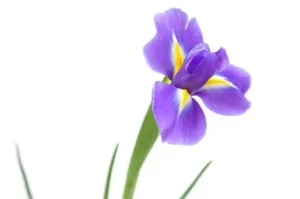![]() Prices in Canadian Dollars.
Prices in Canadian Dollars.![]() Prefer to call and speak to a floral agent? 1-877-277-4787
Prefer to call and speak to a floral agent? 1-877-277-4787
Iris
From ancient times the stately Iris stood as a symbol of power and majesty. This flower was dedicated to Juno.

Interestingly, it is thought that it was the origin of the scepter. The Egyptians placed it on the brow of the Sphinx and on the scepter of their kings, the three leaves of its blossoms typifying faith, wisdom and courage.
The Iris was named after the Goddess of the rainbow because of its many colors. One of the duties of the Greek Goddess Iris was that of leading the souls of dead women to the Elysian Fields. In token of that faith the Greeks planted a purple Iris on the graves of women.
Commonly known as fleur-de-lis or flag, the Iris genus comprises around 200 species, the most prevalent commercially grown of which is I. hollandica, or the Dutch hybrids. These are grown from bulbs and originate from southern Europe and the Mediterranean.
Iris’ are members of the Iridaceae family, which also includes Crocuses, Freesias and Gladioli.
Iris’ show three petals called “The standards”, these are upright. And three outer petal-like sepals called “the falls” because they droop down and away from the rest of the flower.

